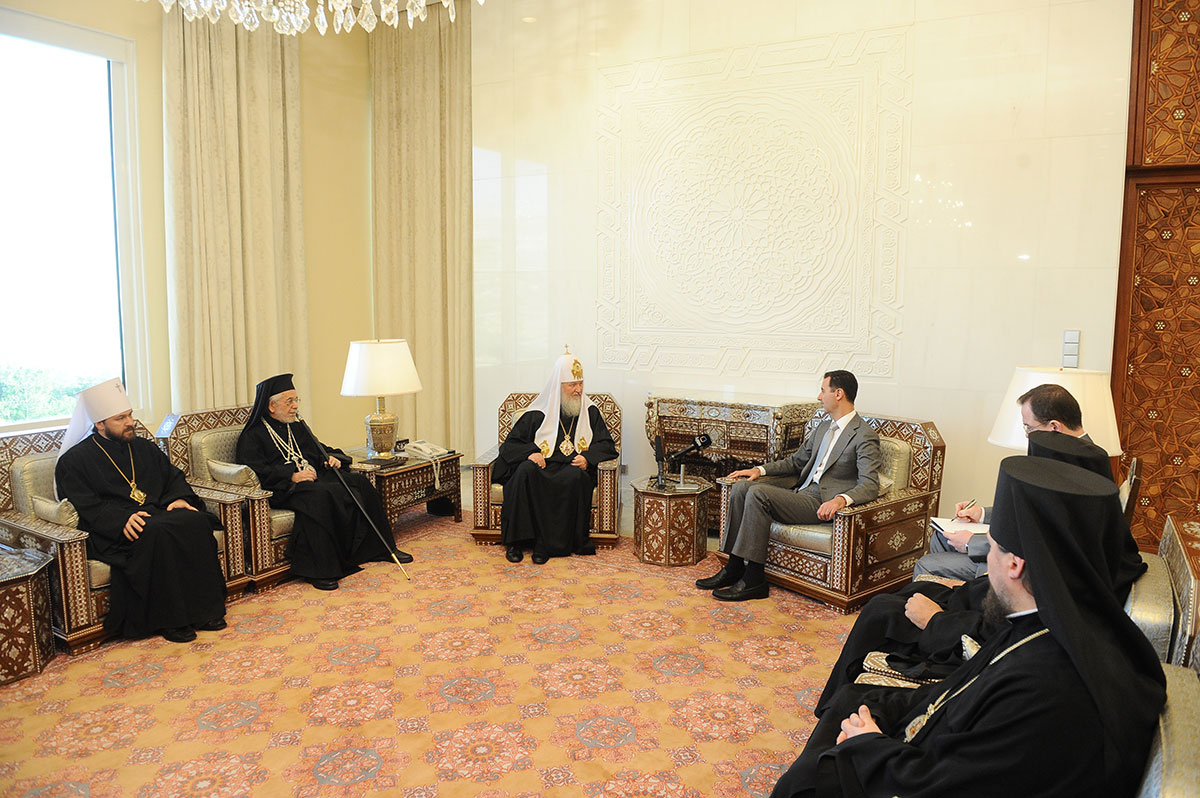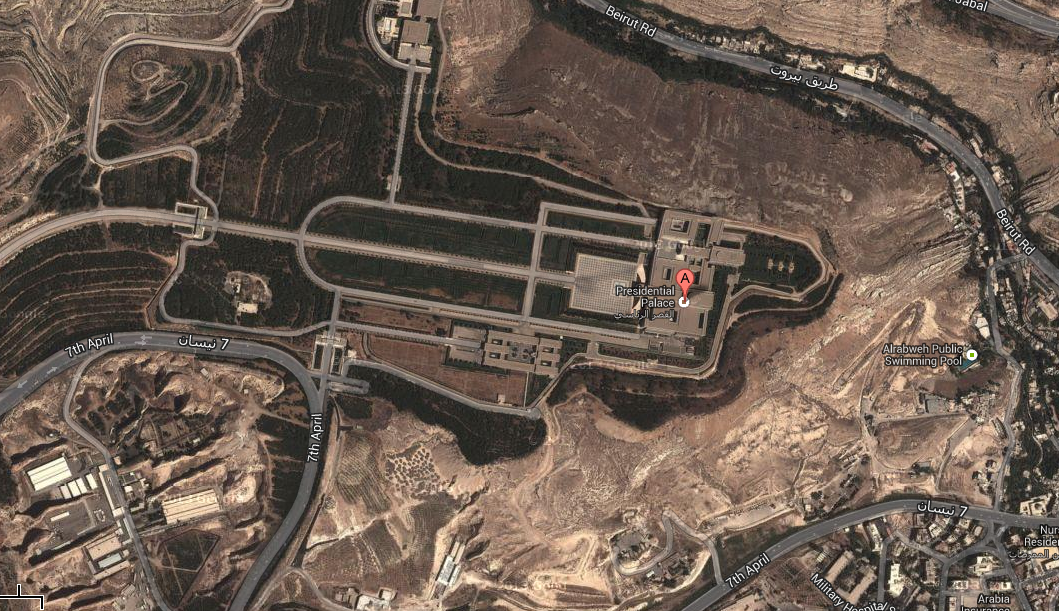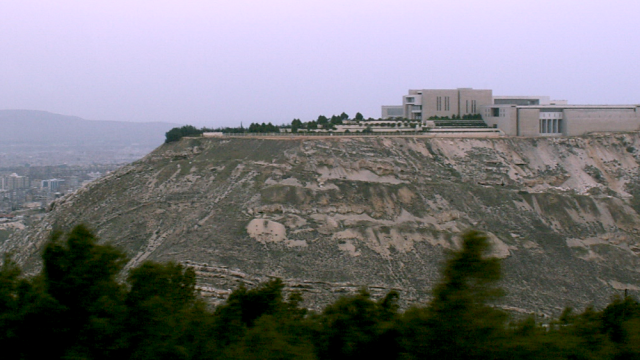One of the remarkable things about the Assad regime is the veneer of tasteful normalcy that surrounds his family’s public image, from a glowing Vogue feature on Asma al-Assad to their boring Instagram presence. That aura extends to the presidential palace, which was built by Kenzō Tange — the Pritzker Prize-winning architect who designed some of Japan’s most recognisable buildings. Who knew evil could look so banal?
Yesterday, The Guardian‘s Oliver Wainwright took a long look at the low-slung white palace, which sits on a cliff overlooking Damascus. The building was built over five years in the late 1980s (it was commissioned by the elder Assad) at a cost of roughly $US1 billion. Its blocky white facade wouldn’t be out of place on a street in Malibu, except for its size: 5,500,000 square feet (including the grounds) of outrageously expensive materials and details.

Image via the Russian Orthodox Church.
One report described a massive room clad in marble tiles that each cost almost $US150 a piece in today’s dollars. In total, the price of the room’s tiling amounted to nearly $US3.4 million dollars, adjusted for inflation. “There were soaring fountains and cavernous marble rooms,” reported PBS’ Stephen Talbot in 2004. “It was a cold and intimidating fortress, empty except for scurrying aides.” Though according to Wainwright, the Assad family has never truly lived in the building, much state business is conducted there.
What’s more interesting than the building’s opulence, though, is the role of the architect who built it. Tange had been lauded for his Hiroshima memorial, built three decades prior, and for his critical role in the rebuilding of Tokyo after World War II. When Hafez al-Assad commissioned the building from him in 1985, his human rights violations were already well-known. Though Tange seemingly never spoke publicly about the process of accepting and designing the palace, it’s easy to imagine the moral ambiguity of the situation: Should architects judge their clients based on their morals?
It’s hard to say how Tange would’ve felt about his role in creating the Assad regime’s architectural presence in Damascus. But it’s safe to say that as a champion of modernist ideals and peace, the cognitive dissonance was strong. [The Guadian]


Image by Nawar-2012. Lead image via.
